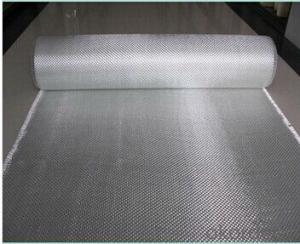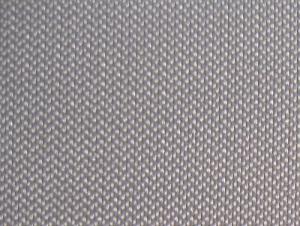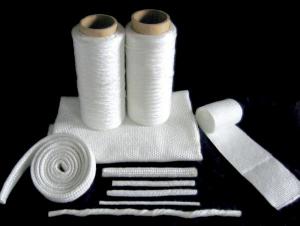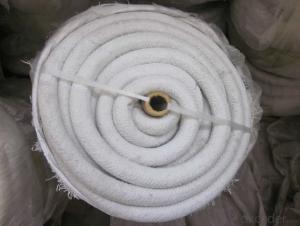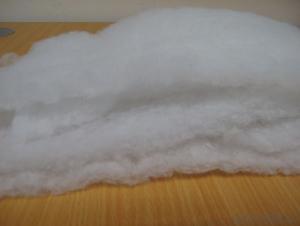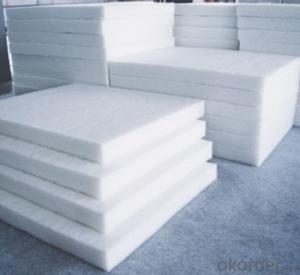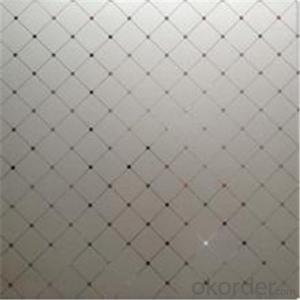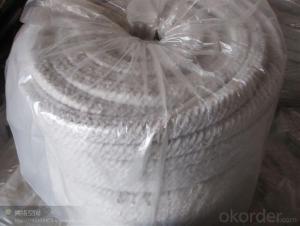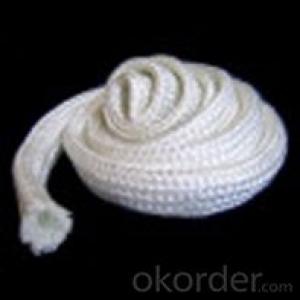Glass Fiber Woven Roving Cloth Fabric
- Loading Port:
- Qingdao
- Payment Terms:
- TT OR LC
- Min Order Qty:
- 500 m
- Supply Capability:
- 3000 m/month
OKorder Service Pledge
OKorder Financial Service
You Might Also Like
Product description
1.Glass woven roving are bidirectional fabric made by direction roving in plain weave pattern.
2.Compatible with unsaturated polyester ,vinyl resin ,epoxy resin .
3.Applicable for hand lay-up ,winding and compress molding process ,suitable for manufacturing tank ,boat ,automobile parts ,and other FRP product
Products advantage
1.Consistent thickness and excellent surface treatment .
2.Rapid impregnating and good compatibility with resin.
3.Uniform tension , high dimensional stability and easy to operate.
4.Good mechanical properties and high strength
5.Factory produce and product ISO certificated
1 Muti-resin-compatible
2 Easy shape adaptation
3 Easy impregnation
4 Good transparency
5 Excellent mechannical properties
product code | area weight | density warp*weft | tex | combustible content |
EWR200 | 200 | 4.6*4.6 | 200*200 | 0.4-0.8 |
EWR 270 | 270 | 4.6*4.1 | 300*300 | |
EWR360 | 360 | 3.2*1.8 | 600*900 | |
EWR400 | 400 | 3.6*3.2 | 600*600 | |
EWR450 | 450 | 3.2*2.8 | 600*900 | |
EWR500 | 500 | 2.2*2.0 | 1200*1200 | |
EWR580 | 580 | 2.6*2.2 | 1200*1200 | |
EWR600 | 600 | 2.6*2.4 | 1200*1200 | |
EWR800 | 800 | 2.0*1.6 | 2400*2400 |
- Q:Are glass fiber textiles resistant to wrinkling?
- Glass fiber textiles are generally resistant to wrinkling. Their inherent strength and rigidity maintain the shape and structure of textiles made from them. Moreover, glass fibers have a low coefficient of thermal expansion, meaning they do not significantly expand or contract with temperature changes. This enhances their wrinkle-resistant properties and makes them more durable compared to other materials. However, it's worth mentioning that the textile's overall wrinkle resistance can also be influenced by factors like the specific weave or construction of the fabric, as well as the finishing treatments applied to it.
- Q:Can glass fiber textiles be used in reinforcement of aramid fibers?
- Yes, glass fiber textiles can be used in the reinforcement of aramid fibers. The combination of these two materials can provide enhanced strength and improved mechanical properties to the final product.
- Q:What are the different types of glass fiber textiles available in the market?
- There are several types of glass fiber textiles available in the market, including woven fabrics, non-woven fabrics, knitted fabrics, and braided fabrics. Each type has its own unique characteristics and is used for various applications such as reinforcement in composites, insulation, and filtration.
- Q:Can glass fiber textiles be used in corrosive environments?
- Glass fiber textiles are capable of being used in environments that are corrosive. The resistance to corrosion of glass fibers is excellent against the majority of chemicals, and they do not easily degrade or break down when exposed to substances that cause corrosion. Due to this advantageous quality, glass fiber textiles are suitable for utilization in environments that carry a high risk of corrosion, such as chemical processing plants, wastewater treatment facilities, or coastal areas that are exposed to saltwater. By providing enduring protection against corrosion, glass fiber textiles prove to be a dependable option for applications within corrosive environments.
- Q:Can glass fiber textiles be used in the production of luggage?
- Yes, glass fiber textiles can be used in the production of luggage. Glass fiber textiles are known for their high strength and durability, making them suitable for applications where strength and resilience are required, such as in the production of luggage. The use of glass fiber textiles in luggage can provide added strength, making the luggage more resistant to wear and tear, and less prone to damage during transportation. Additionally, glass fiber textiles can also offer lightweight properties, which can be beneficial in luggage manufacturing, as it allows for easier handling and reduces the overall weight of the luggage. Overall, glass fiber textiles can be a viable and practical material choice for the production of luggage, offering enhanced durability and strength without sacrificing weight.
- Q:How does glass fiber textile perform in terms of durability?
- Glass fiber textile is known for its exceptional durability. It has high tensile strength, meaning it can withstand heavy loads and resist tearing or breaking. Additionally, glass fiber textile is highly resistant to chemicals, moisture, and UV radiation, making it suitable for both indoor and outdoor applications. Its durability allows it to maintain its structural integrity and appearance over time, ensuring long-lasting performance in various environments.
- Q:What are the different surface coating methods for glass fiber textile?
- Some common surface coating methods for glass fiber textiles include dip coating, spray coating, roll coating, and curtain coating. These methods involve applying a liquid coating material onto the surface of the glass fiber textile to enhance its properties such as resistance to water, chemicals, and abrasion.
- Q:What are the different finishes available for glass fiber textiles?
- Glass fiber textiles offer a range of finishes, each with its own unique properties and applications. Let's explore some of the most common finishes available: 1. Sizing: This finish enhances the handling and processing characteristics of glass fiber textiles. By reducing fiber-to-fiber friction, it facilitates easier handling and weaving. Additionally, sizing temporarily shields the textile from abrasion and mechanical damage during processing. 2. Silane Finish: Silane, a commonly used chemical compound, acts as a finish for glass fiber textiles. It improves adhesion between the glass fibers and the matrix material in composite applications. Furthermore, silane finishes enhance the wetting properties of the fibers, allowing for better resin impregnation during composite processing. 3. Anti-static Finish: Glass fiber textiles can be treated with an anti-static finish to prevent the accumulation of static electricity. This is particularly valuable in applications where static electricity can cause issues, such as in the manufacturing of electronic components or in cleanrooms. 4. Fire-resistant Finish: To enhance their resistance to flame and heat, glass fiber textiles can be treated with fire-resistant finishes. These finishes offer added safety in applications where fire hazards are present, such as in the construction industry or in protective clothing. 5. Water-repellent Finish: Applying a water-repellent finish to glass fiber textiles makes them resistant to water absorption. This prevents the textile from becoming heavy and wet, thereby preserving its performance and durability. 6. UV-resistant Finish: By treating glass fiber textiles with UV-resistant finishes, they can be shielded from the harmful effects of sunlight. These finishes protect the fibers from degradation and extend the textile's lifespan, making it suitable for outdoor applications. It is worth noting that different finishes can be combined to meet specific performance requirements. For instance, a glass fiber textile may feature both a silane finish for improved adhesion in composite applications and a fire-resistant finish for heightened safety. The choice of finish depends on the intended application and the desired properties of the textile.
- Q:Can glass fiber textiles be used in reinforcement of foam materials?
- Glass fiber textiles have the capability to reinforce foam materials, resulting in a notable enhancement in their overall mechanical properties. Due to its remarkable strength and stiffness, glass fiber is widely utilized as a reinforcing material. When glass fiber textiles are incorporated into foam materials, they serve as a reinforcement, imparting additional strength and rigidity to the foam structure. This reinforcement effectively heightens the foam's ability to resist bending, compression, and impact, making it suitable for a variety of applications that demand increased strength. Furthermore, glass fiber textiles also contribute to the foam's dimensional stability and resistance against heat, chemicals, and moisture. Consequently, glass fiber textiles present themselves as a viable option for reinforcing foam materials.
- Q:Can glass fiber textile be used in aerospace exteriors?
- Yes, glass fiber textile can be used in aerospace exteriors. Glass fiber textiles, also known as fiberglass textiles, are widely used in the aerospace industry due to their high strength-to-weight ratio, durability, and resistance to heat and chemicals. They are commonly used as reinforcement materials in composite structures, such as carbon fiber composites, to add strength and stiffness to aircraft components. Glass fiber textiles are particularly suitable for aerospace exteriors as they provide excellent resistance to environmental factors, including UV radiation, moisture, and temperature extremes. Additionally, their flexibility allows for easy molding and shaping, enabling complex designs and aerodynamic shapes to be achieved. Overall, glass fiber textiles are a valuable material for aerospace exteriors, contributing to the lightweight, high-performance characteristics required for aircraft in this industry.
1. Manufacturer Overview |
|
|---|---|
| Location | |
| Year Established | |
| Annual Output Value | |
| Main Markets | |
| Company Certifications | |
2. Manufacturer Certificates |
|
|---|---|
| a) Certification Name | |
| Range | |
| Reference | |
| Validity Period | |
3. Manufacturer Capability |
|
|---|---|
| a)Trade Capacity | |
| Nearest Port | |
| Export Percentage | |
| No.of Employees in Trade Department | |
| Language Spoken: | |
| b)Factory Information | |
| Factory Size: | |
| No. of Production Lines | |
| Contract Manufacturing | |
| Product Price Range | |
Send your message to us
Glass Fiber Woven Roving Cloth Fabric
- Loading Port:
- Qingdao
- Payment Terms:
- TT OR LC
- Min Order Qty:
- 500 m
- Supply Capability:
- 3000 m/month
OKorder Service Pledge
OKorder Financial Service
Similar products
New products
Hot products
Hot Searches
Related keywords
